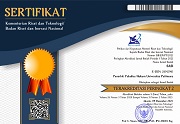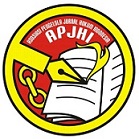Optimalisasi Fungsi Legislasi Badan Musyawarah Kampung
 ), Achmad Ruslan(3), Hamzah Halim(4)
), Achmad Ruslan(3), Hamzah Halim(4)
(1) Fakultas Hukum Universitas Musamus, Merauke, Indonesia
(2) Fakultas Hukum Universitas Hasanuddin, Makassar, Indonesia

(3) Fakultas Hukum Universitas Hasanuddin, Makassar, Indonesia
(4) Fakultas Hukum Universitas Hasanuddin, Makassar, Indonesia
 Corresponding Author
Corresponding Author
Abstract
Keywords
DOI
10.47268/sasi.v27i3.403
Published
2021-10-07
How To Cite
@article{SASI403,
author = {Erni Silambi and Fransiskus Samderubun and Achmad Ruslan and Hamzah Halim},
title = {Optimalisasi Fungsi Legislasi Badan Musyawarah Kampung},
journal = {SASI},
volume = {27},
number = {3},
year = {2021},
keywords = {Legislation; Optimization; Regulation Functions},
abstract = {This study aims to optimize the implementation of the legislative function in the village consultative organization. This study using sociolegal law research methods, data collection techniques used are interviews, direct observation, literature study. All data obtained from this study, both primary data, secondary data, and tertiary data, are then processed and analyzed qualitatively for further description in order to provide understanding by explaining the results of this study, ideally, it discusses and agrees on a village regulation draft from the right of initiative. The proposal purpose is to gather the aspirations from the village community and stipulated in a village regulation product. However, the implementation of proposals and designs proposed by the Village Deliberative Council was low, resulting in the lack of village regulations being produced. There are 179 villages in Merauke district, none of it has village regulation product initiatively.. The decline performance of the Village Deliberative Council will result in ineffective legislative functions. Appropriate regulations, namely renewal and improvement in terms of Quality, Quantity, Timeliness, Effectiveness, Independence, Environment, become benchmarks in optimizing the legislative function of Village Deliberative Council. Something questionable here is whether the village community can follow the changes or reject the changes.},
issn = {2614-2961}, pages = {314--322} doi = {10.47268/sasi.v27i3.403},
url = {https://fhukum.unpatti.ac.id/jurnal/sasi/article/view/403}
}
Jurnal
[1] Agustin, M. (2016). Partisipasi Masyarakat Dalam Perencanaan Pembangunan Desa Melalui Musrenbang (Studi Kasus Pada Pembangunan Japordes Desa Tunggunjagir Kecamatan Mantup Kabupaten Lamongan). Publika, 4(1).
[2] Garuan, I. HI. (2018). Fungsi Badan Musyawarah Kampung (Bamuskam) Terhadap Penyelenggaraan Pemerintah Kampung Waroi Distrik Yendidori Kabupaten Biak Numfor. Gema Kampus IISIP YAPIS Biak, 13(2), 26-32. https://doi.org/10.52049/gemakampus.v13i2.66.
https://doi.org/10.52049/gemakampus.v13i2.66
[3] Lekipiouw, S. H. (2018). Konstruksi Kelembagaan Perwakilan Dalam Pelaksanaan Asas Kedaulatan Rakyat. Sasi, 24(1), 73-83.
https://doi.org/10.47268/sasi.v24i1.120
[4] Tajuddin, M. A., Alputila, M. J., & Jalal, N. (2019). Peningkatan Kualitas Hukum Kampung Melalui Pelatihan Dan Pedampingan Di Kampung Onggaya, Distrik Naukenjerai, Kabupaten Merauke. Musamus Devotion Journal, 1(02), 46-55.
[5] Oruw, M. J., Kiyai, B., & Ruru, J. M. (2016). Peranan Kepala Distrik Dalam Perencanaan Pembangunan Kampung (Suatu Studi Di Distrik Buruway Kabupaten Kaimana Provinsi Papua Barat). Jurnal Administrasi Publik, 3(038).
https://doi.org/10.32531/jelekn.v3i1.63
[6] Siswanto, H. (2011). Memaksimalkan Prolegnas dan Prolegda dalam Politik Hukum Nasional (Politik Hukum Penanggulangan Kejahatan Perdagangan Orang di Era Globalisasi). Fiat Justisia: Jurnal Ilmu Hukum, 5(2), 190-208.
https://doi.org/10.25041/fiatjustisia.v5no2.59
[7] Susilo, A. J., Erviantono, T., & Fil, S. (2015). Analisis Kinerja Legislasi Dewan Perwakilan Rakyat Daerah Periode Tahun 2009-2014 (Studi Kasus: Kabupaten Tolitoli, Sulawesi Tengah). Citizen Charter, 1(2), 28618.
[8] Sasaka, K. (2017). Peran Badan Permusyawaratan Kampung (Bamuskam) Dalam Penyelenggaraan Pemerintahan Di Kampung Apimakot Distrik Serambakon Kabupaten Pegunungan Bintang. Jurnal Politik Pemerintahan, 1(1), 1-6.
Buku
[9] Halim, H., & Putera, K, R, S. (2013). Cara Praktis Menyusun & Merancang Peraturan Daerah: (Suatu Kajian Teoritis & Praktis Disertai Manual) Konsepsi Teoritis Menuju Artikulasi Empiris. Jakarta: Kencana.
[10] Ilmar, A. (2014). Hukum Tata Pemerintahan. Jakarta: Kencana.
[11] Ruslan, A., & Librayanto, R. (2013). Teori dan Panduan Praktik Pembentukan Peraturan Perundang-Undangan Di Indonesia. Yogyakarta: Rangkang Education & PuKap Indonesia.
[12] Sudikno, M. (2011). Teori Hukum. Yogyakarta: Universitas Atmajaya, h. 28.
[13] Theresia, A., Andini, K. S., Nugraha, P. G., & Mardikanto, T. (2014). Pembangunan Berbasis Masyarakat: Acuan Bagi Praktisi, Akademisi, dan Pemerhati Pengembangan Masyarakat. Bandung: Penerbit Alfabeta.
[14] Winardi. (1999). Pengantar Manajemen Penjualan. Jakarta: Citra Aditya Bakti.
| Dublin Core | PKP Metadata Items | Metadata for this Document | |
| 1. | Title | Title of document | Optimalisasi Fungsi Legislasi Badan Musyawarah Kampung |
| 2. | Creator | Author's name, affiliation, country | Erni Dwita Silambi; Fakultas Hukum Universitas Musamus, Merauke; Indonesia |
| 2. | Creator | Author's name, affiliation, country |
Fransiskus Samderubun; Fakultas Hukum Universitas Hasanuddin, Makassar; Indonesia  |
| 2. | Creator | Author's name, affiliation, country | Achmad Ruslan; Fakultas Hukum Universitas Hasanuddin, Makassar; Indonesia |
| 2. | Creator | Author's name, affiliation, country | Hamzah Halim; Fakultas Hukum Universitas Hasanuddin, Makassar; Indonesia |
| 3. | Subject | Discipline(s) | |
| 3. | Subject | Keyword(s) | Legislation; Optimization; Regulation Functions |
| 4. | Description | Abstract | This study aims to optimize the implementation of the legislative function in the village consultative organization. This study using sociolegal law research methods, data collection techniques used are interviews, direct observation, literature study. All data obtained from this study, both primary data, secondary data, and tertiary data, are then processed and analyzed qualitatively for further description in order to provide understanding by explaining the results of this study, ideally, it discusses and agrees on a village regulation draft from the right of initiative. The proposal purpose is to gather the aspirations from the village community and stipulated in a village regulation product. However, the implementation of proposals and designs proposed by the Village Deliberative Council was low, resulting in the lack of village regulations being produced. There are 179 villages in Merauke district, none of it has village regulation product initiatively.. The decline performance of the Village Deliberative Council will result in ineffective legislative functions. Appropriate regulations, namely renewal and improvement in terms of Quality, Quantity, Timeliness, Effectiveness, Independence, Environment, become benchmarks in optimizing the legislative function of Village Deliberative Council. Something questionable here is whether the village community can follow the changes or reject the changes. |
| 5. | Publisher | Organizing agency, location | Faculty of Law, Universitas Pattimura |
| 6. | Contributor | Sponsor(s) | |
| 7. | Date | (YYYY-MM-DD) | 2021-10-07 |
| 8. | Type | Status & genre | Peer-reviewed Article |
| 8. | Type | Type | |
| 9. | Format | File format | |
| 10. | Identifier | Uniform Resource Identifier | https://fhukum.unpatti.ac.id/jurnal/sasi/article/view/403 |
| 10. | Identifier | Digital Object Identifier | 10.47268/sasi.v27i3.403 |
| 11. | Source | Title; vol., no. (year) | SASI; Vol 27, No 3 (2021): Volume 27 Nomor 3, Juli - September 2021 |
| 12. | Language | English=en | en |
| 13. | Relation | Supp. Files | |
| 14. | Coverage | Geo-spatial location, chronological period, research sample (gender, age, etc.) | |
| 15. | Rights | Copyright and permissions | Copyright: Authors who publish their manuscripts in this Journal agree to the following conditions: 1. The copyright in each article belongs to the author, as well as the right to patent. 2. Authors can enter into separate, additional contractual arrangements for the non-exclusive distribution of the journal's published version of the work (e.g., post it to an institutional repository or publish it in a book), with an acknowledgment of its initial publication in this journal. 3. Authors are permitted and encouraged to post their work online (e.g., in institutional repositories or on their website) before and during the submission process, as it can lead to productive exchanges, as well as earlier and greater citation of published work. 4. Authors have the right to self-archiving of the article (Author Self-Archiving Policy)
License: The SASI Journal is disseminated based on the Creative Commons Attribution-NonCommercial 4.0 International license terms. This license allows anyone to copy and redistribute this material in any form or format, compose, modify, and make derivatives of this material for any purpose. You cannot use this material for commercial purposes. You must specify an appropriate name, include a link to the license, and certify that any changes have been made. You can do this in a way that is appropriate but does not imply that the licensor supports you or your use.
|
Copyright (c) 2021 Fransiskus Samderubun, Achmad Ruslan, Hamzah Halim

This work is licensed under a Creative Commons Attribution-NonCommercial 4.0 International License.

 : 3160 times
: 3160 times Download : 1475 times
Download : 1475 times
















